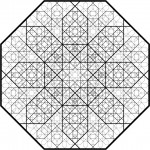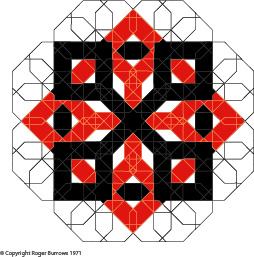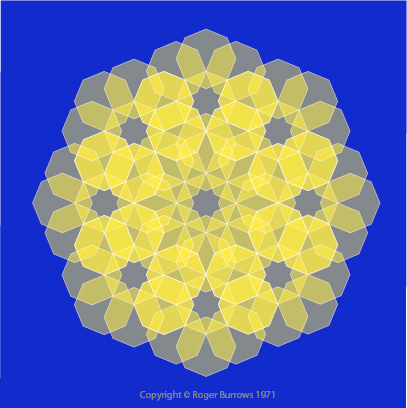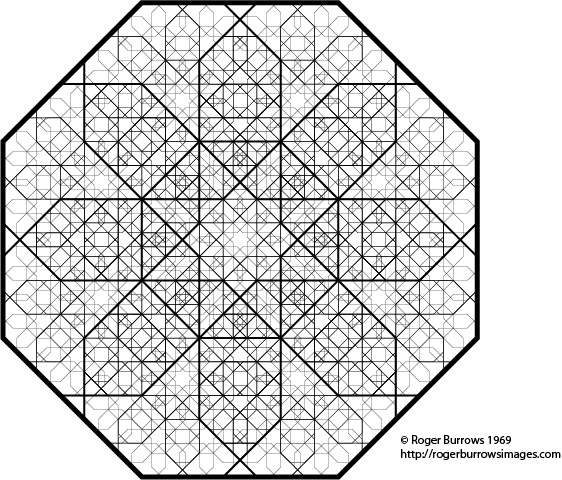An Octagon Design System
Mathematicians working within the Islamic culture, from about 900 AD, often used geometry to communicate ideas, instructions, and even to send messages using the Abjad numerological system and the numbers of sides of polygons, rosettes, and other design forms, to encode words and meanings. Walking into the Alhambra in Granada, Spain, for example, is, in a way, like walking into a visual library of images that can be literally read. The whole subject is fascinating and involves understanding the geometrical systems used in Islamic designs as well as understanding the symmetries within the Arabic root system. In about 1972 I was talking to the author, Idries Shah, about some of my discoveries. (Shah’s book, “The Sufis,” contains lot of interesting stuff about the Abjad system). Shah ended up using a design derived from one of the geometrical systems I had discovered, based on octagons, on the dust jacket of an edition of his book, “The Caravan of Dreams.” Shah liked the fact that the system was based on rotating eight octagons around one, creating units of nine. So, in this case, he was more interested in the symbolism of the numbers than in encoding words that could be read. I have animated the system and, if you’d like to see a part of the animation, please click on the following image:
The octagon design system creates a design grid that I have included in a number of my Images design books, for example, in Images 2, published by Running Press in Philadelphia, ISBN 978-0762439096. Many design forms can be found within the design grids created by the system. Variations of the first example, below, appear in all sorts of design and craft forms. The second image is the image that appeared on the dust jacket of Caravan of Dreams. In the late 1960’s, and early 1970’s, I spent a number of summers in North Africa and worked with craftsmen in the Kasbahs who had lost the knowledge of the geometrical systems behind the images that they were using on everything from prayer rugs to copper plates. The design forms they were using were copies, of copies, of copies, and had consequently lost much of their geometrical value. Also, most of the craftsman had no idea of how to read or understand the symbolism, or encoded meanings, of the designs they were using. Once the craftsmen understood the systems and meanings behind the designs they were able to start to add meaning and a sort of relevance to their work that was not there before. Besides the geometrical, ABJAD, and symbolic systems, and meanings, there were also other layers of meaning added to many designs by color, by script, and with stylized images. Other layers of meaning and usage were added by the position in which the art forms appeared – where they were in relationship to others, the spaces they either defined or were part of, etc. Craftsmen following old traditions were as gifted as the greatest musicians, poets, geometricians, and artists, of antiquity.


